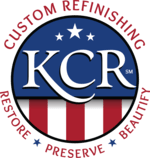When it comes to slips, trips, and falls (STFs), the statistics are scary. In the United States, falls account for more than 8 million hospital emergency room visits. In addition to causing injuries, falls cost money and result in lost work productivity. Fortunately, building managers and service contractors can help prevent STFs. Below are some questions and answers to help provide solutions to protect facility occupants and visitors from harmful and expensive falls:
Q: What facility conditions cause STFs?
- Slippery floors due to oils and grease, melting snow or ice, and other wet or dry spills
- Improperly covered or secured electrical cords, cables, and other wires
- Change in flooring elevations or walkway/ramp slopes, improperly sized step risers, and uneven or poorly spaced steps
- Traction changes in connected flooring types (from wet to dry floors, tiles to carpeting, etc.)
- Floor mats that are unsecured or have high edges
- Floors that are dirty, have worn finish, or are in poor shape (loose, cracked/chipped tile)
- Poor lighting, excessive glare or shine on floors, and obstructed views
- Clutter on floors or bottom cabinet drawers left open
- Elevators misaligned with the floors
- Lack of handrails
Q: What are the best ways to keep floors dry, clean, and safe?
Property managers must ensure the conditions above do not exist or are remedied quickly. An ongoing quality floor care program is a must, along with year-round placement of quality scraper and wiper mats in adequate lengths.
Q: Do certain types of flooring cause STF accidents?
All flooring has the potential to contribute to STFs. However, floors with a poorly applied or inappropriate finish, or that are badly worn or dirty, may be most risky.
Q: What new technologies help make floors safer?
- Floor finishes—While not new, more floor finishes have achieved UL and NFSI certification that demonstrate their slip resistance.
- Specialty products—Many newer cleaners and topical treatments increase shoe-to-floor traction.
- Internet of Things (IoT)—Increasingly, manufacturers and other businesses are deploying IoT technology to send real-time alerts to identify fall hazards. GPS also can alert cleaning crews where a spill has occurred, track workers to expedite a cleanup, and warn occupants to avoid the area.
Q: What is an STF risk assessment plan, and what should it include?
An STF risk assessment plan helps identify areas that pose a higher STF risk and ensures maintenance personnel know the proper procedures for preventing and reporting STF incidents. At a minimum, an effective STF risk assessment plan should include:
- Basic training on how to avoid accidents
- A list of approved floor care equipment and products, including safety data sheets
- Floor maintenance schedules
- Work orders for nonroutine maintenance
- A timeline for project follow-through and completion
- Forms to capture critical information when an incident occurs
- A method to collect suggestions for process and protocol improvements.
The team at KC Restoration can help you determine the best procedures, products, and maintenance plan for your floors. Please contact us anytime with questions or concerns.

